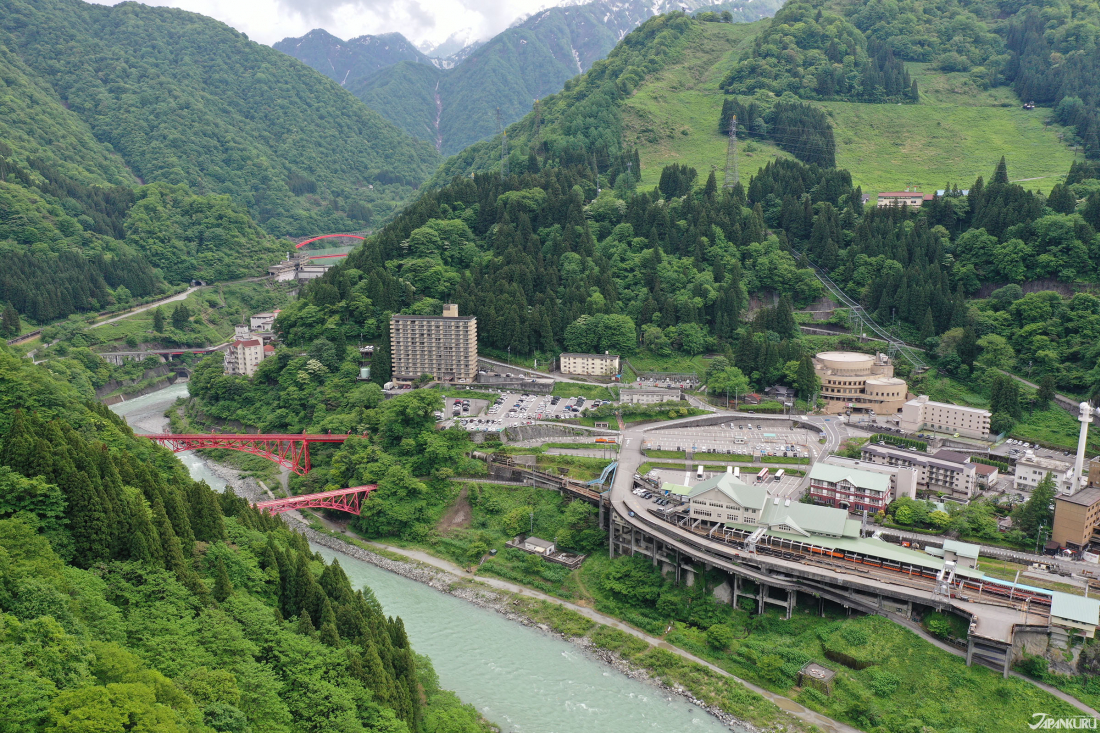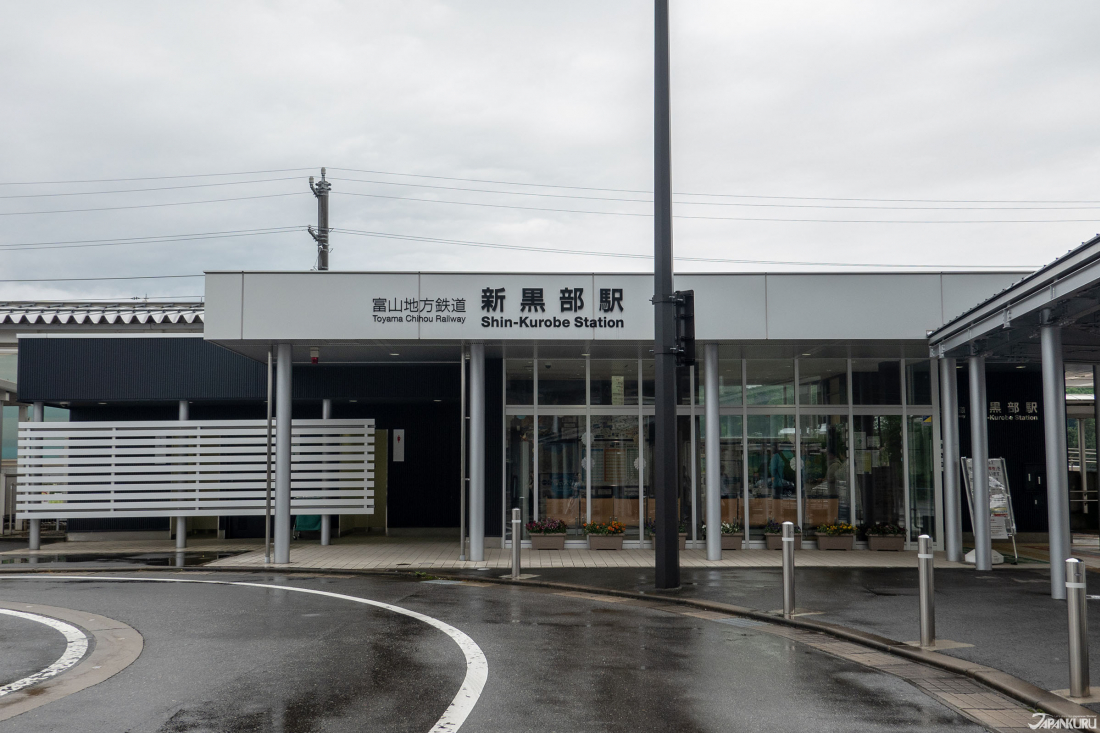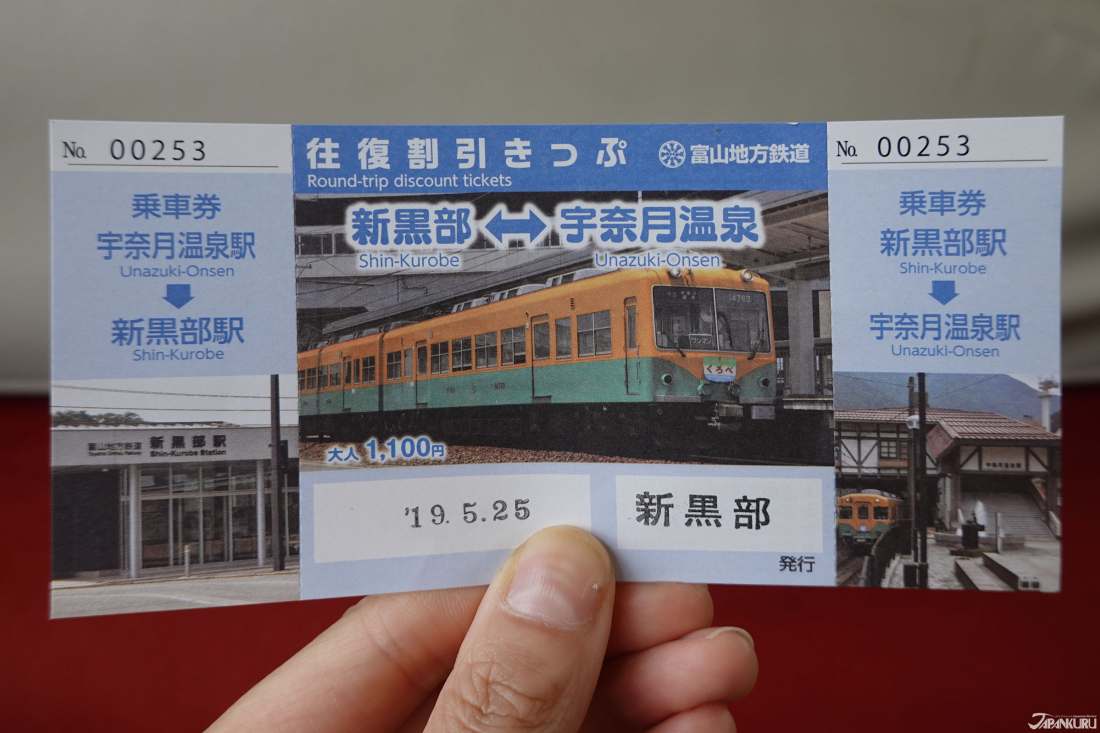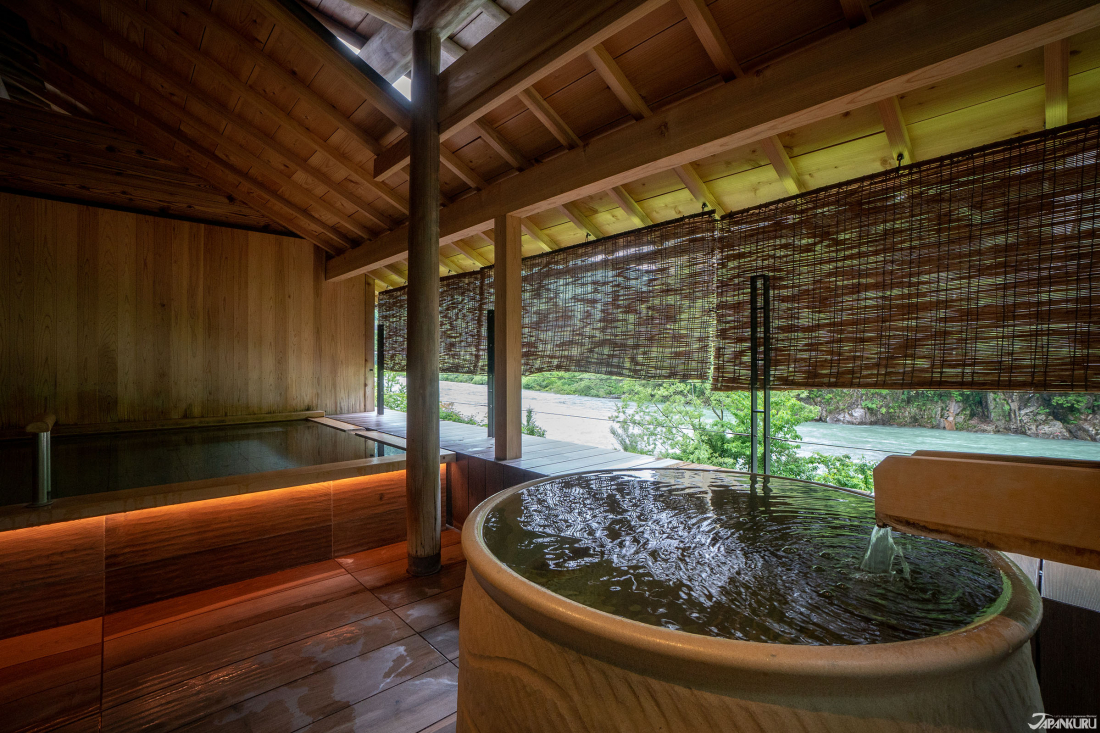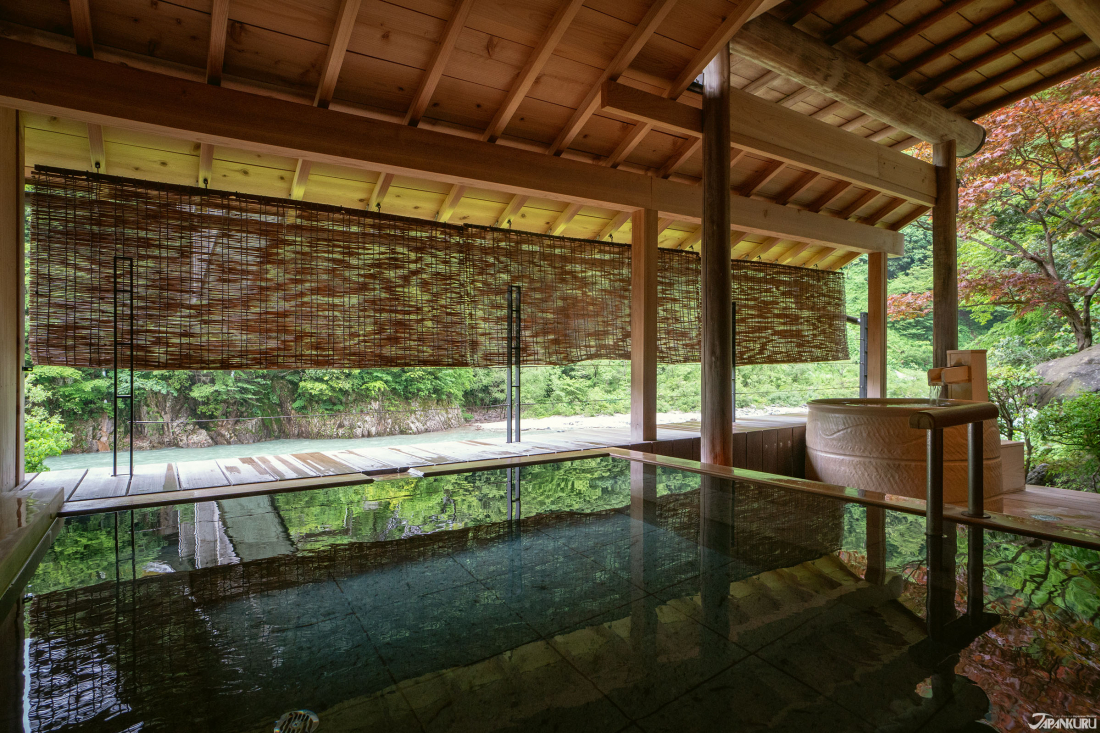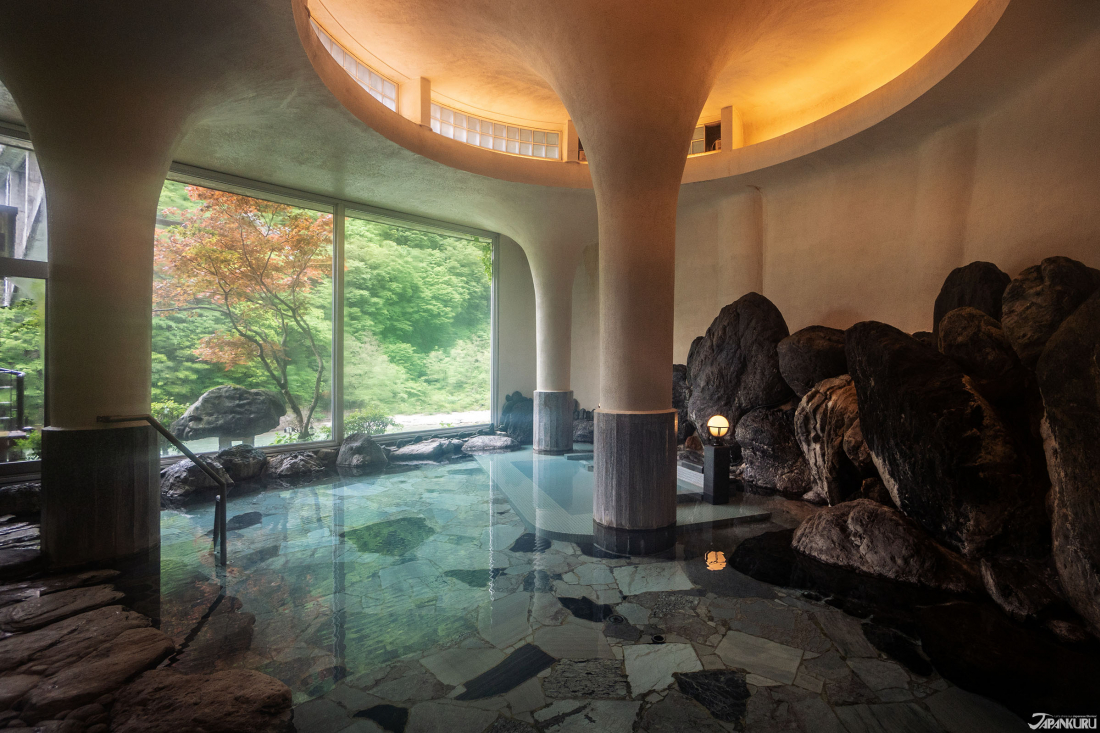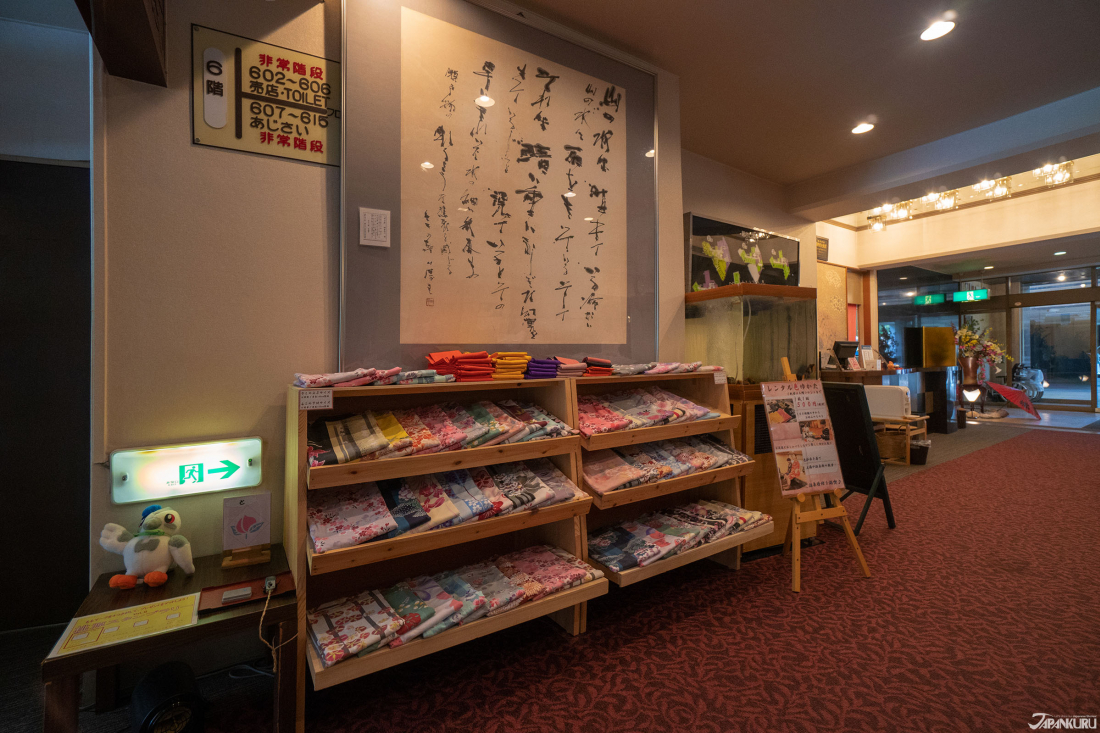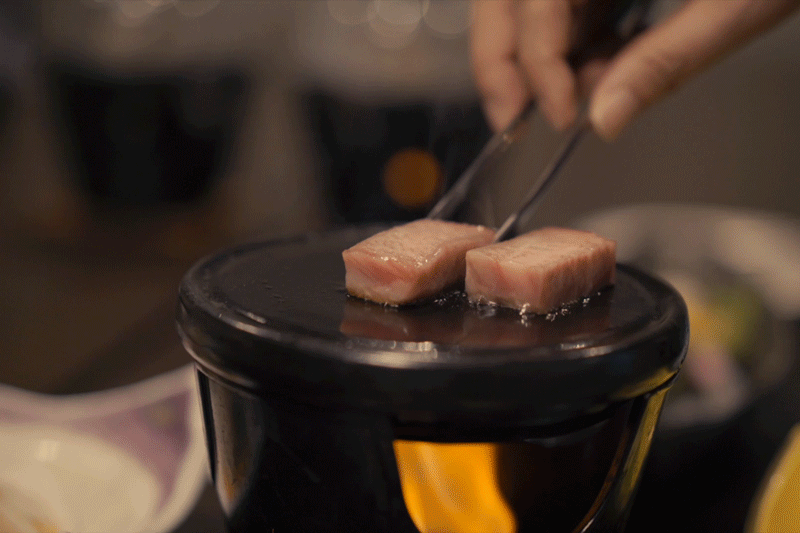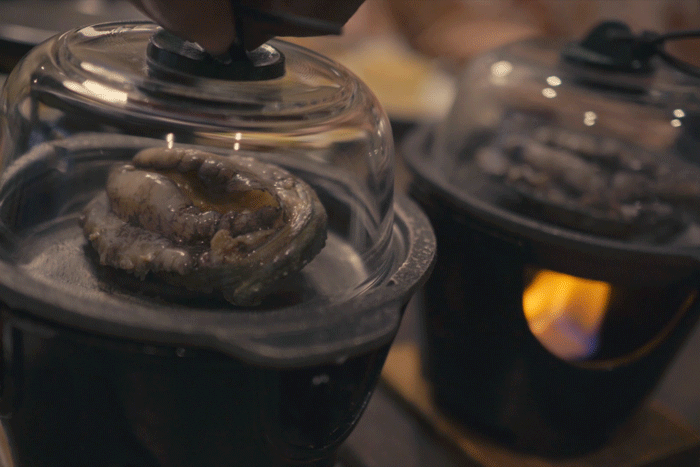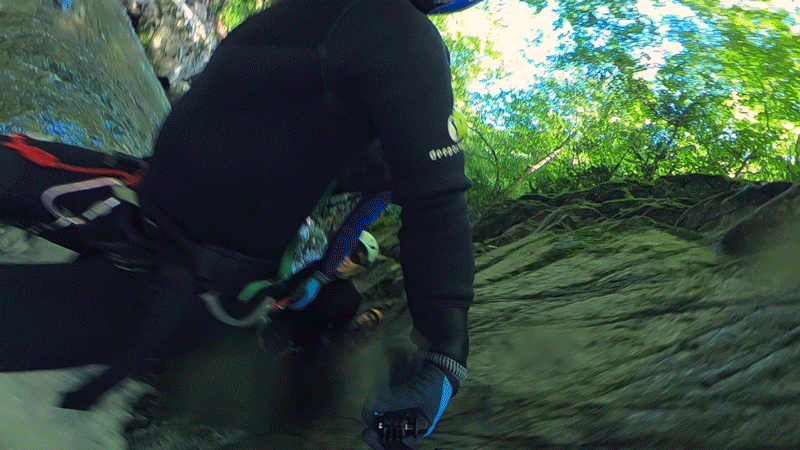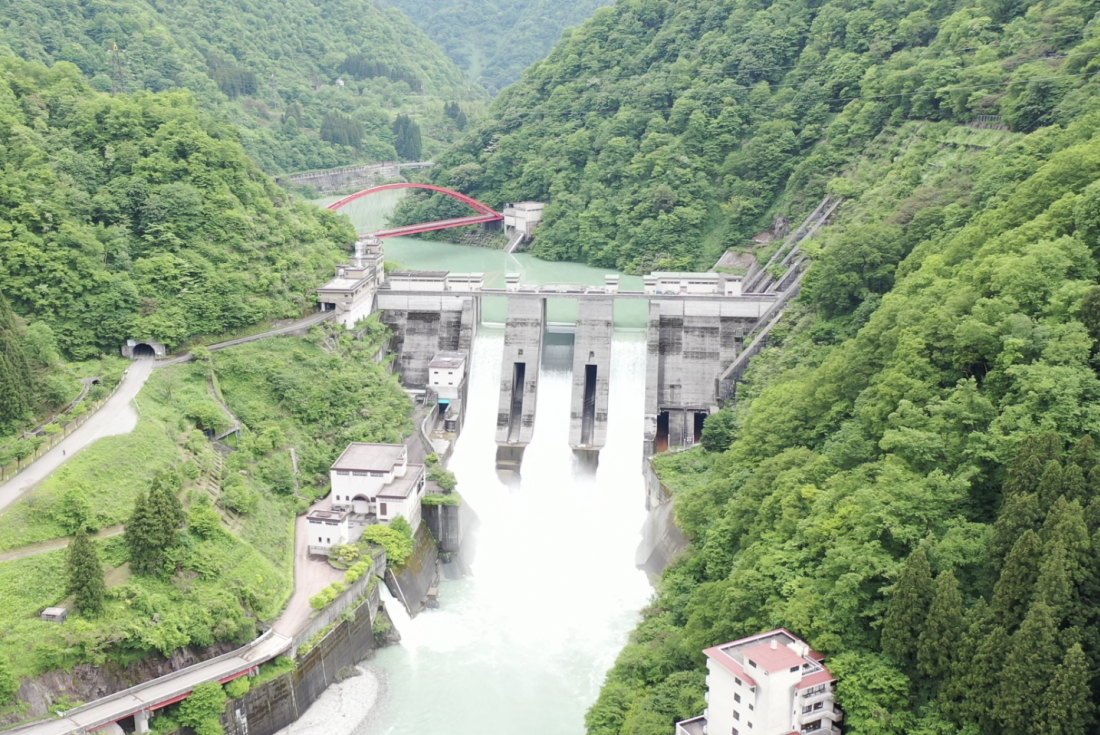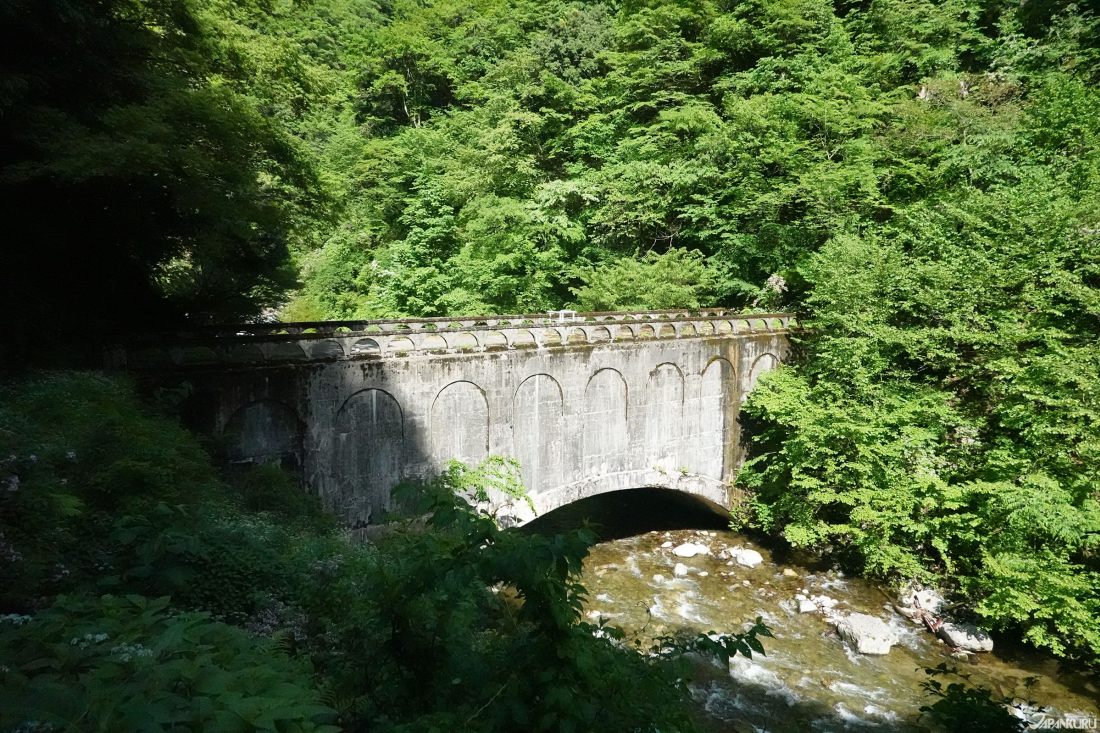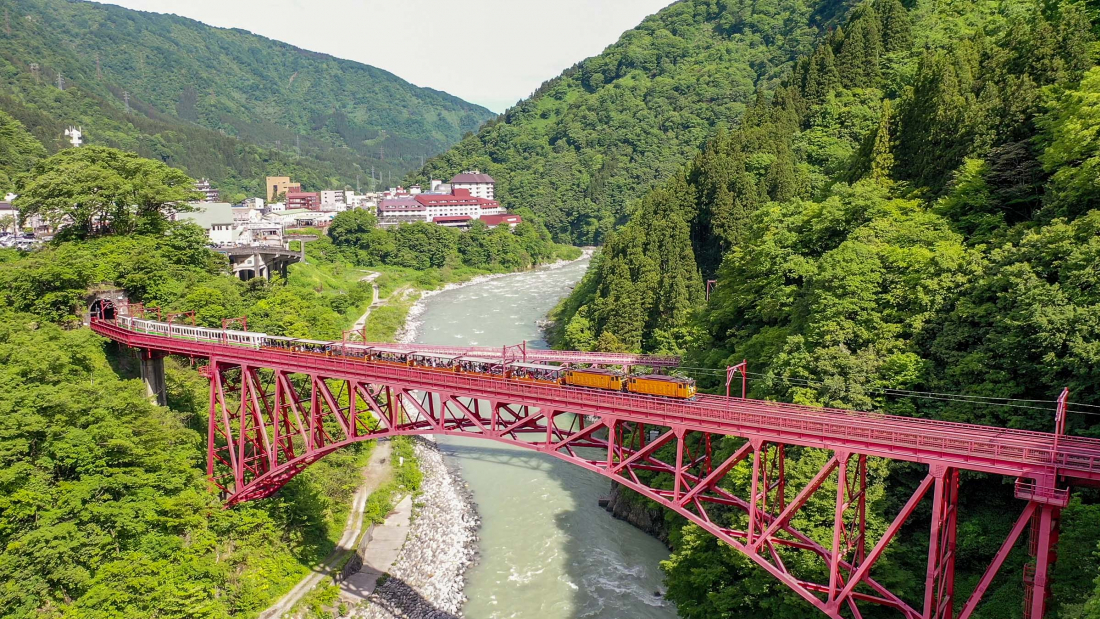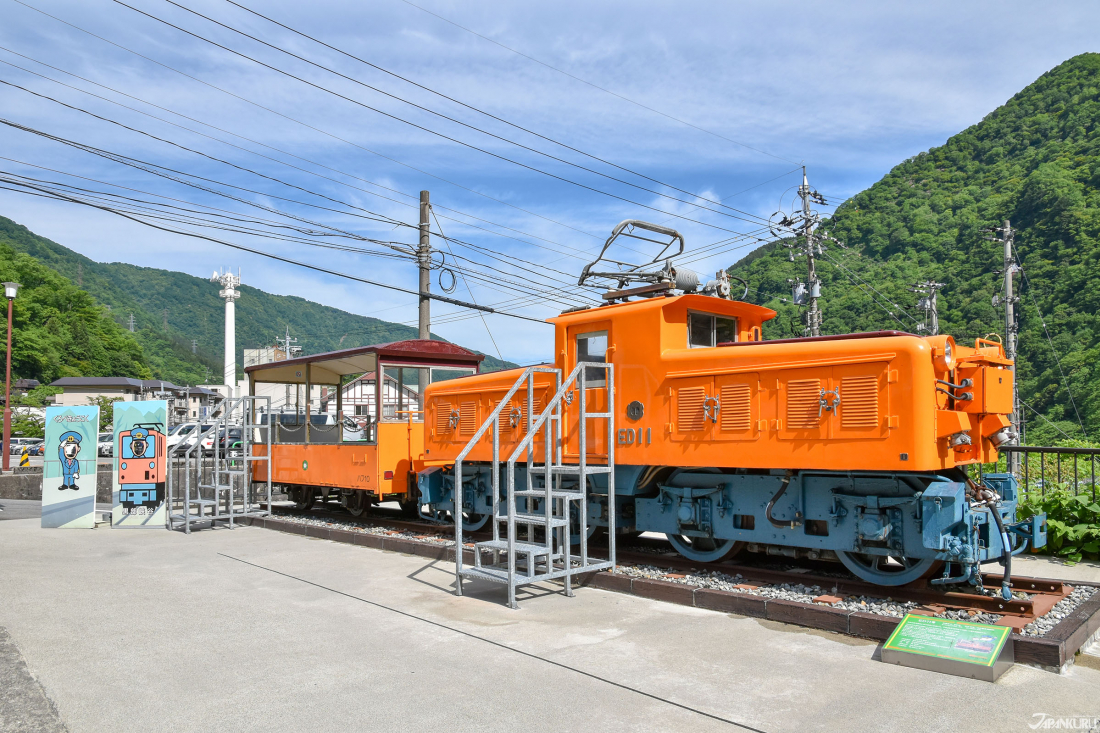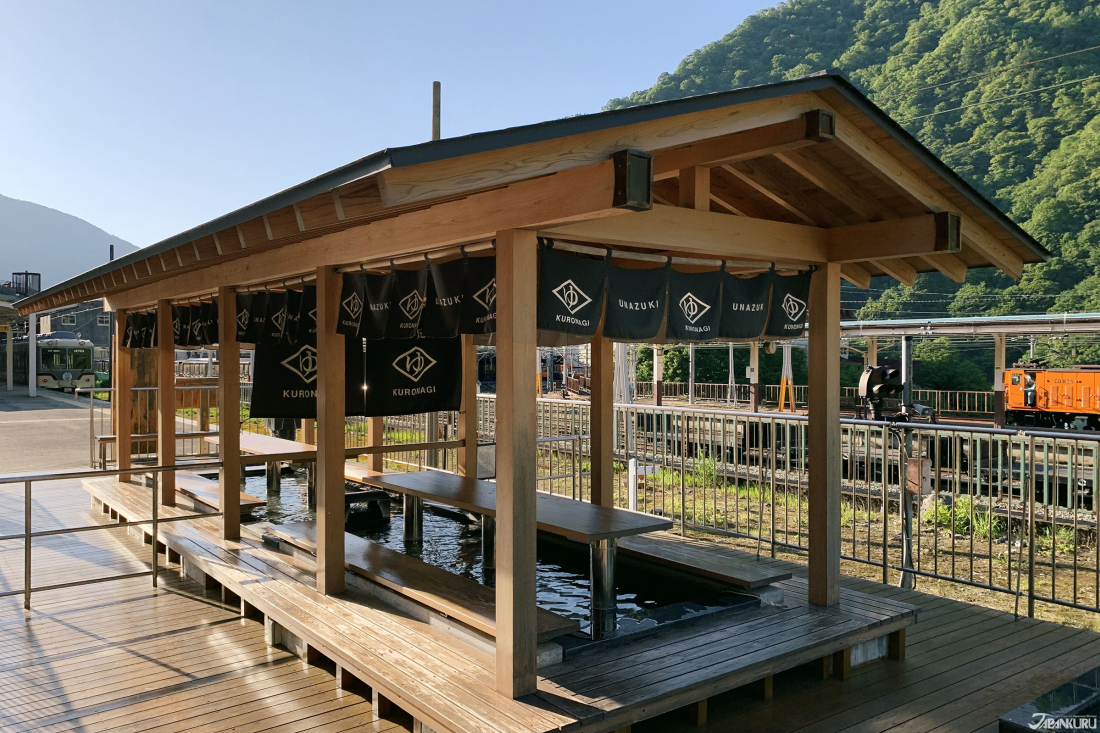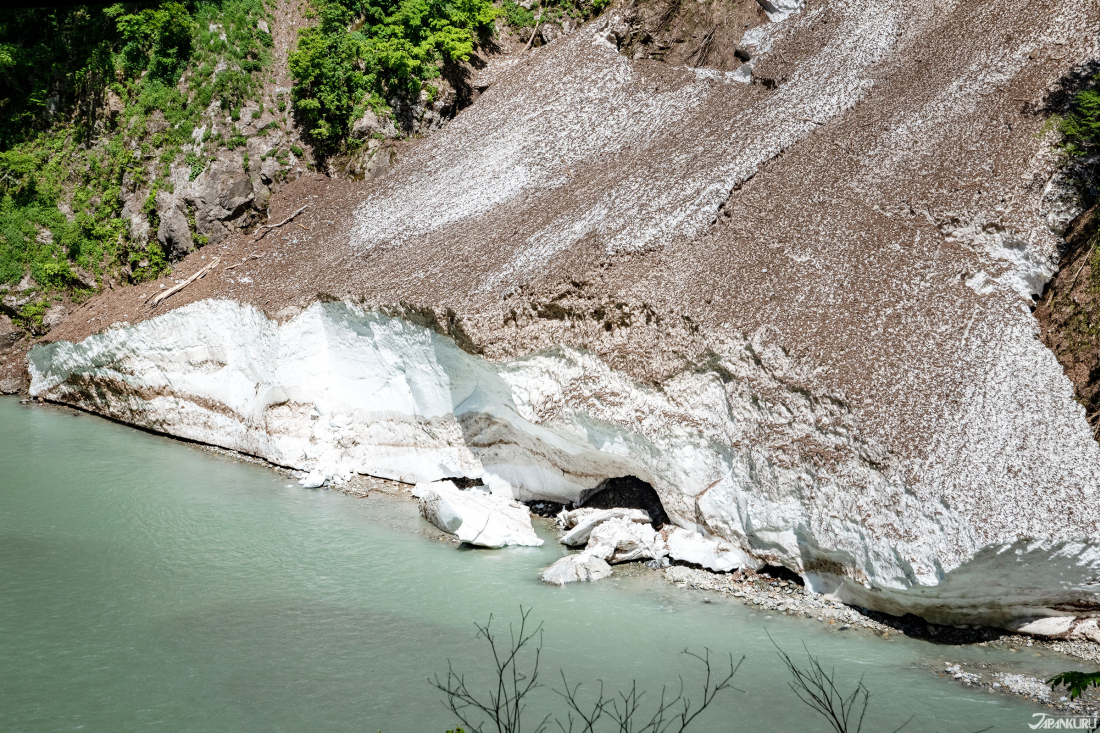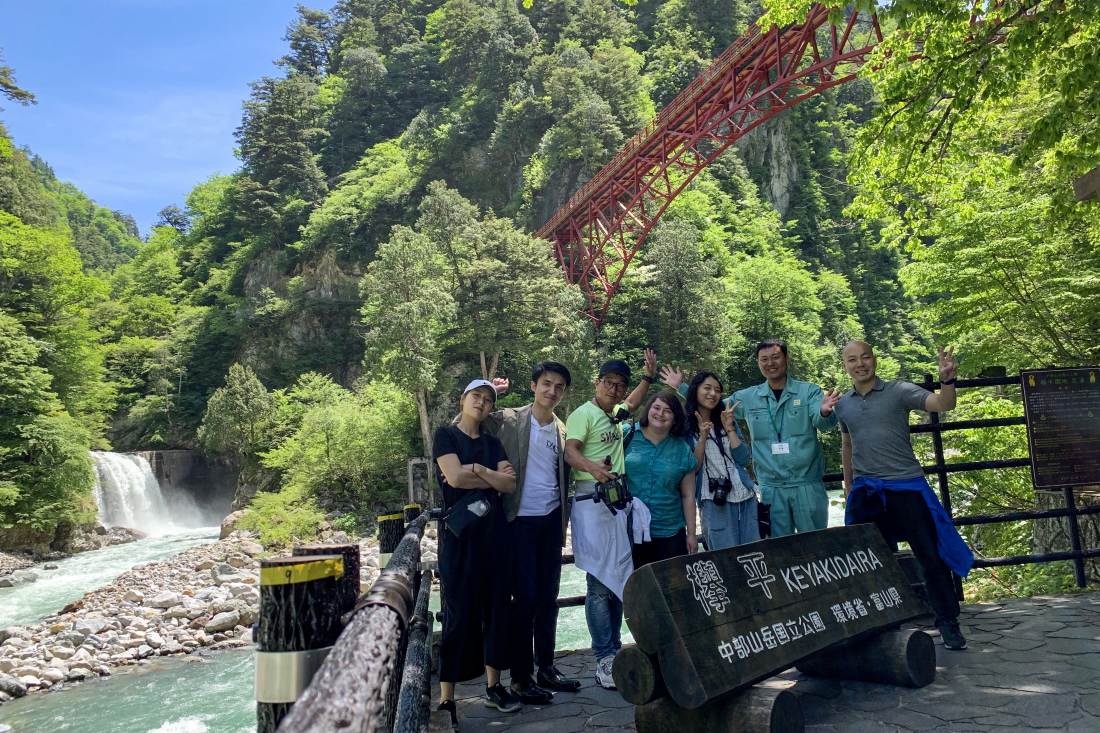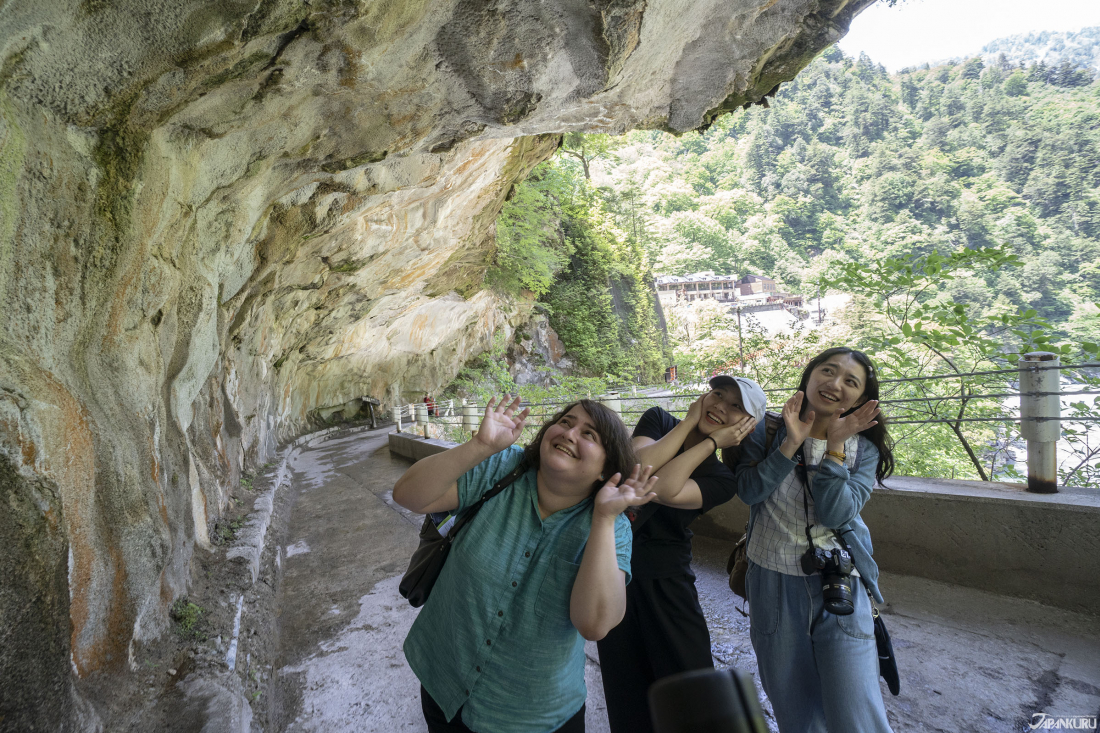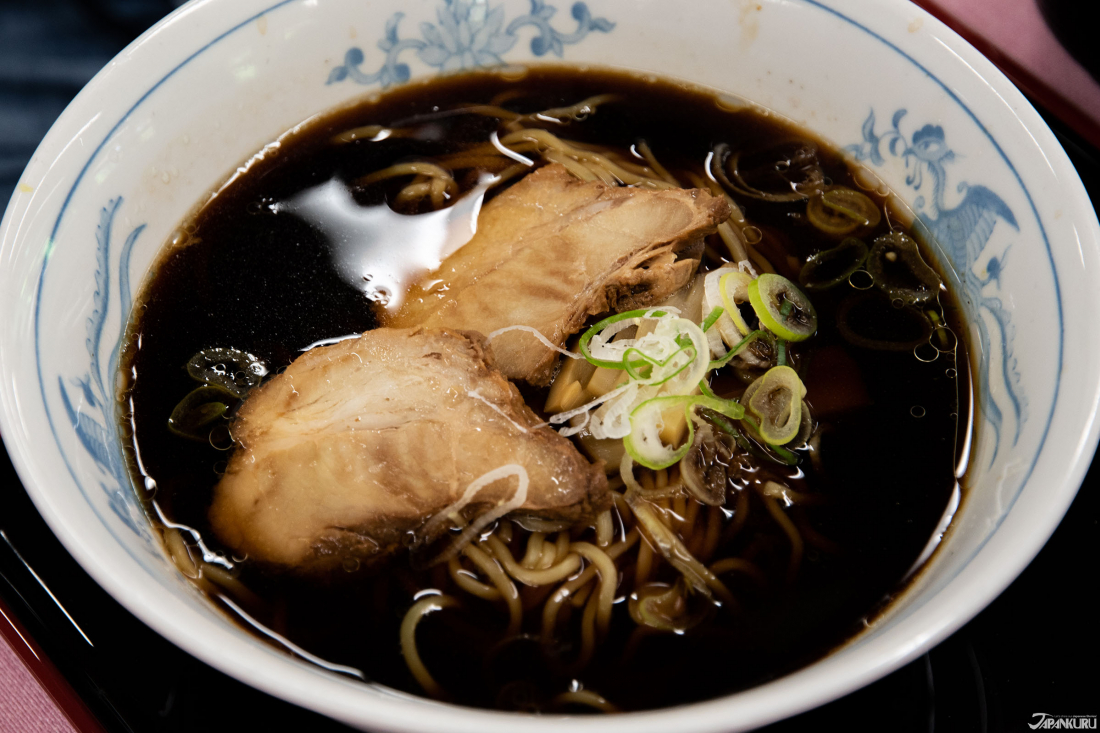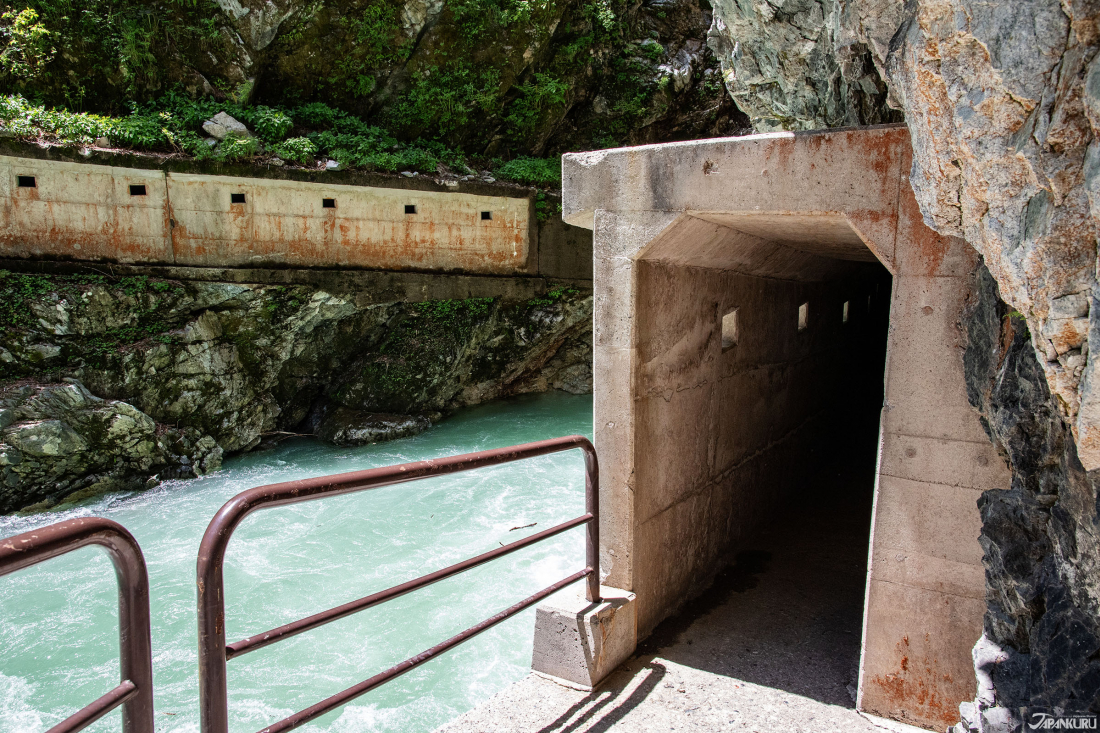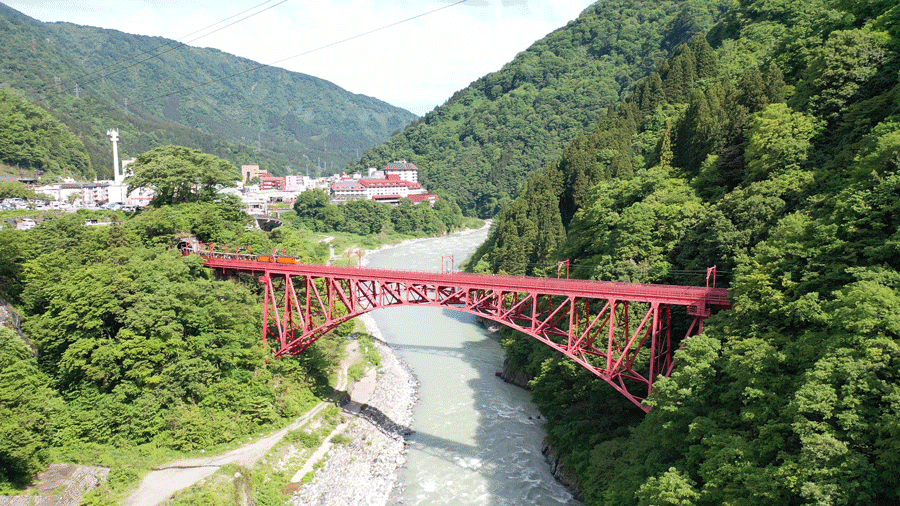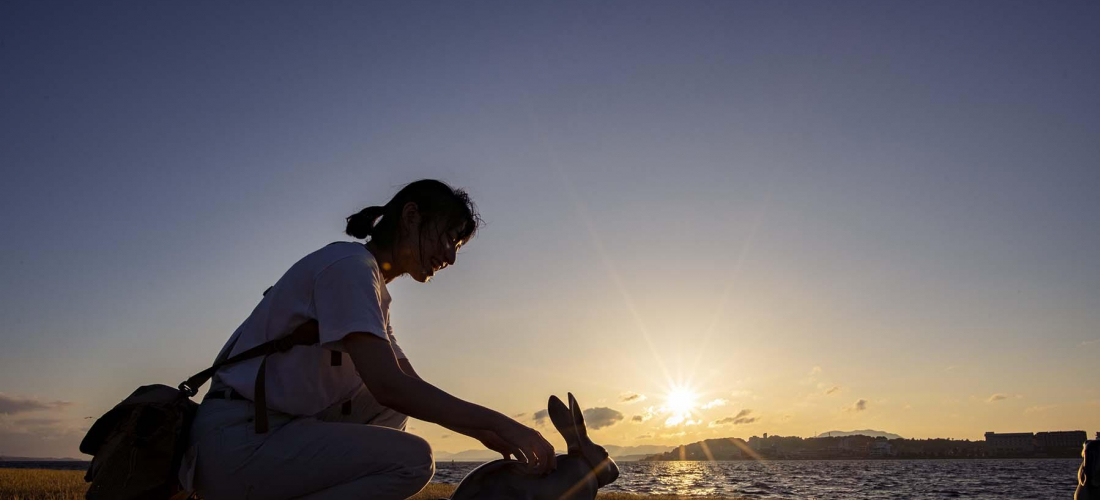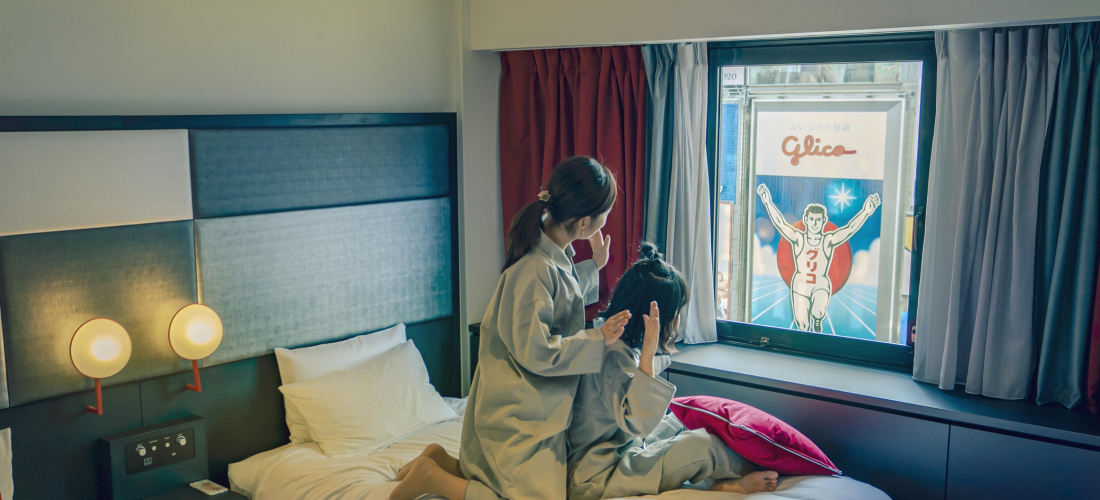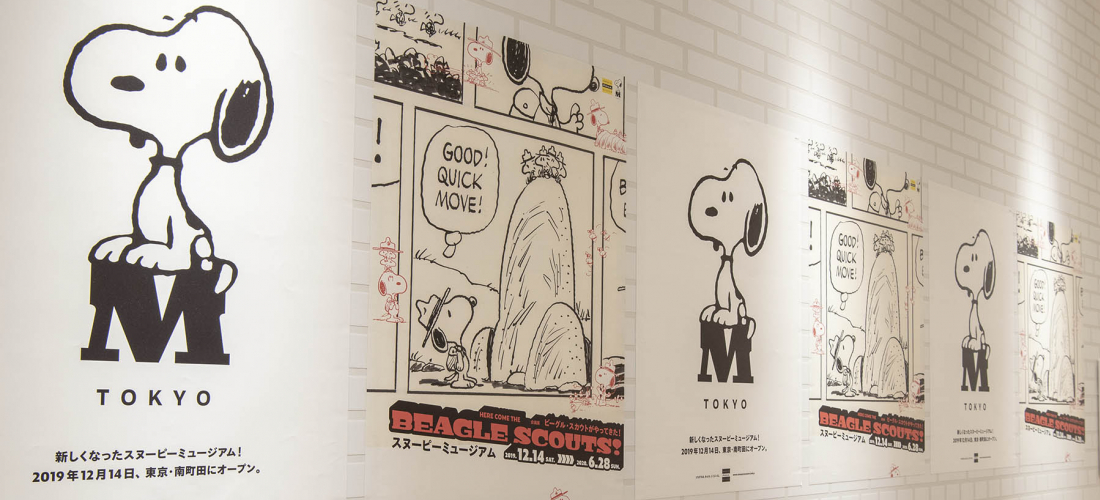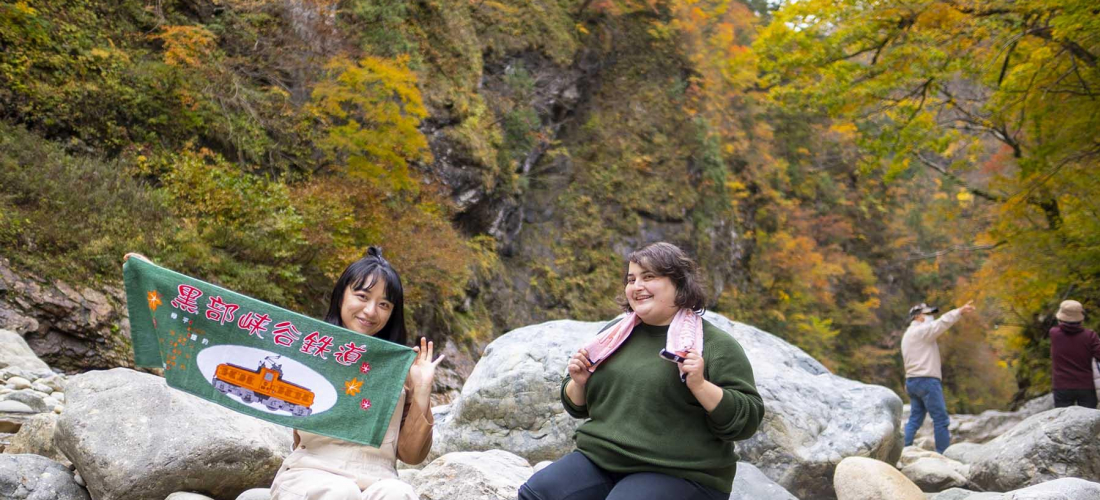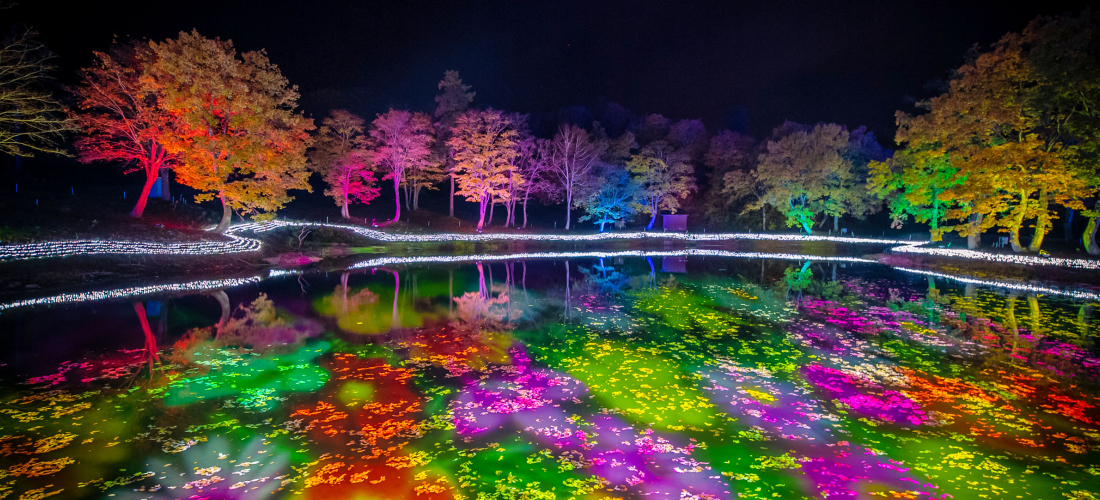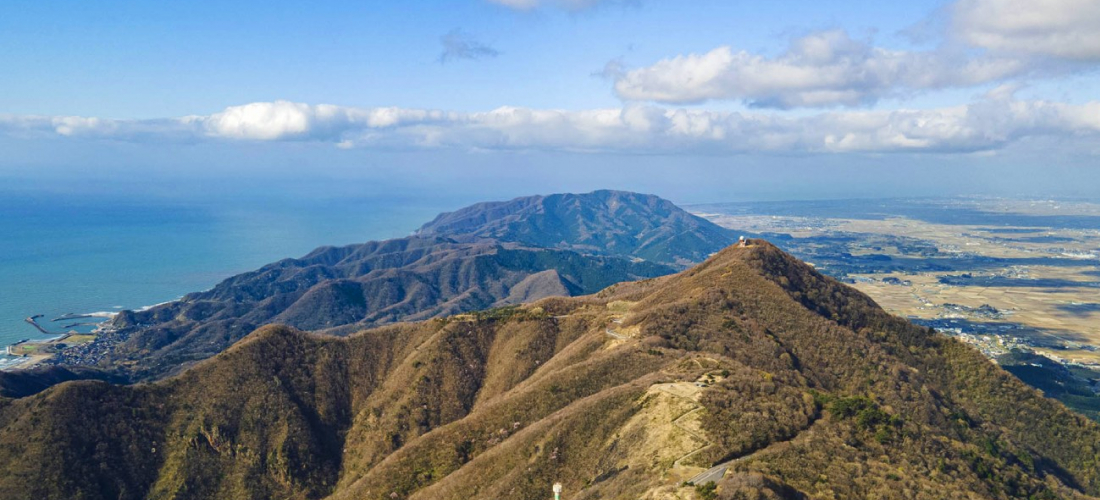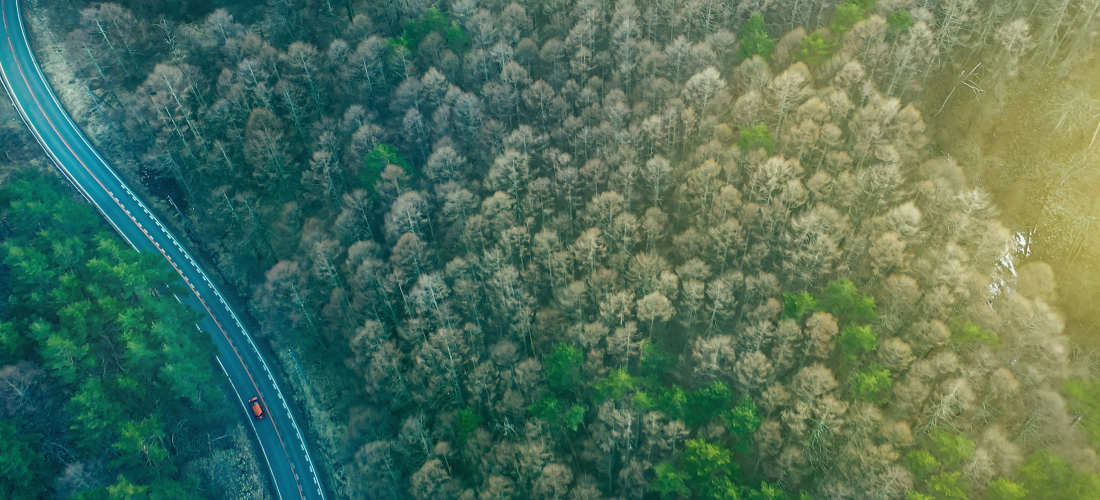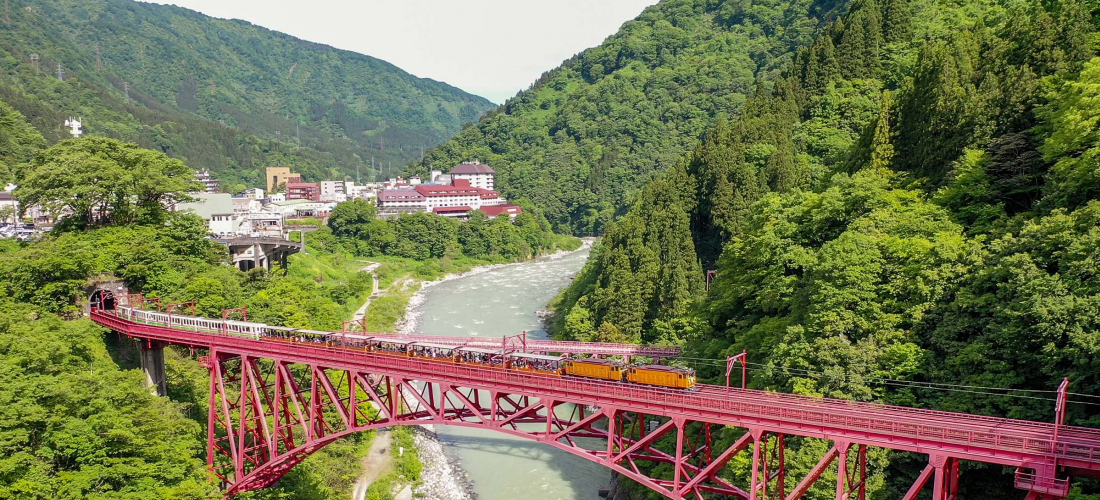
CONTENTS
La préfecture de Toyama est connue pour ses gigantesques murs de neige appelés \”corridors enneigés\”, mais il y a beaucoup plus à découvrir dans cette région. La baie offre un grand nombre de fruits de mer qui ont fait la renommée de Toyama, et la zone de sources chaudes Unazuki Onsen dans les gorges de la rivière Kurobe est parfaite pour les activités estivales telles que le rafting et le canyoning et bien sûr pour se baigner dans les sources naturelles d’eau chaude luxueuses. Après vous êtes aventurés dans les rapides, Kurobe vous offre la possibilité de vous détendre, d’admirer le paysage dans le train de Torokko, et de goûter aux spécialités culinaires de la région.
Continuez la lecture pour en savoir plus sur la belle Kurobe, entre mer et montagne!
Les gorges Kurobe, les gorges les plus impressionnantes du Japon
La ville de Kurobe a gagné en popularité grâce à ses murs de neige dont les fans d'instagram rafollent, mais il y a tellement plus à voir là-bas.
Toyama se situe dans la région de Chubu, au milieu de l'île principale Honshu et au bord de la mer du Japon. On peut remercier cette dernière, pour tous les fruits de mer qu'elle apporte à la baie de Toyama! Mais la zone d'onsen Unazuki vaut autant le détour avec ses sources d'eau chaude traversant les montagnes. Celles-ci offrent à leur tour des ravins et des rivières parfaits pour le canyoning. Montez dans le train Torokko sur la ligne Kurobe Gorge pour explorer les alentours, et vous serez assurés de passer un moment inoubliable!
Des montagnes aux rivières, Unazuki Onsen est riche en paysage naturel.
Comment se rendre dans la zone des onsen Unazuki de Kurobe
Le meilleur moyen reste certainement le shinkansen (TGV japonais). Si vous êtes déjà à l'aéroport de Toyama ou aux alentours, vous pouvez prendre un train ou bus local, mais la ligne Hokuriku Shinkansen vous y emmenera en un clin d'oeil.
Prendre le Shinkansen Hokuriku
Vers:
Kurobe-Unazuki Onsen Station (黒部宇奈月温泉駅)
De:
Gare de Tokyo – 2 heures 20 minutes, 11 860 yens
Gare de Kanazawa – 35 minutes, 4 020 yens
Gare de Toyama – 12 minutes, 2 940 yens
Vous n'aurez ensuite plus qu'à prendre un train depuis la gare des shinkansen de Toyam pour vous rendre à Unazuki Onsen. Traversez la rue pour vous rendre dans la gare de Shin-Kurokbe sur la ligne de Toyama Chihô, pour encore 30 mns de train (aller-retour: 1 100 yens). Le paysage est splendide et le train lui-même est très retro, de quoi passer un agréable voyage! Vous arriverez enfin à la gare de Unazukionsen.
(Note: c'est un peu confus, mais la gare de transfers des shinkansen s'appelle bien Kurobe-Unazuki Onsen, tandis que votre destination finale sur le dernier train se nomme "Unazukionsen".)
Traversez la rue pour vous rendre à la gare locale de Shin-Kurobe.
Le ticket aller-retour permet de faire une bonne affaire.
Arrivés à Unazokionsen, vous serez accueillis par une fontaine de source volcanique chaude!
Depuis l'aéroport de Toyama, le meilleur moyen de vous y rendre reste le bus jusqu'à la gare de Toyama, puis le shinkansen. Cela devrait coûter 3 370 yens environ.
Pour vraiment apprécier votre séjour, logez dans un Ryokan
Visiter une petite ville japonaise comme celle-ci est l'opportunité parfaite pour loger dans un hôtel traditionnel japonais. Les Ryokan sont idéaux pour apprécier les sources chaudes à proximité, déguster de délicieuses spécialités locales et admirer les paysages!
Unazuki Onsen Togen Ryokan
Pour notre séjour, nous avons choisi de passer la nuit au Togen Ryokan, très pratique lorsqu'on se promène à Unazuki Onsen. Nous avons ainsi pu profiter des bains privés disponibles en location dans l'hôtel, ainsi que ses menus premium "kaiseki ryori". Tester toutes sortes de spécialités culinaires de Toyama était très amusant et nous vous le recommandons chaudement.
Le Togen Ryokan offre plusieurs types de chambres. Certaines proposent des lits standards tandis que d'autres sont à base de tatami, à la façon typiquement japonaise, autant pour les familles que pour les groupes, avec des endroits pour s'assoir et admirer la rivière. Si vous doutez encore du confort de l'hôtel, sachez que les sols sont parfumés, que 70% des chambres ont des chaises de massage et des yukata (kimono légers) de différentes tailles.
Unazuki Onsen Togen Ryokan
Addresse: 22-1 Unazuki Onsen, Kurobe City, Toyama
Téléphone: 81-765-62-1131
Check-in/Check-out: 15:00/10:00
Official Website (en)
#1: Profitez de votre propre source naturelle!
Les Ryokan proposent souvent ce qu'on appelle "kashikiri onsen", littéralement, des sources chaudes à louer, où vous pourrez vous prélasser dans des bains luxueux chauffés par les volcans. Si vous n'êtes pas à l'aise lorsqu'il s'agit de vous baigner nu avec des étrangers, ou si vous voulez passer un moment particulier avec votre partenaire, pensez à très vite réserver votre kashikiri onsen. C'est aussi très pratique pour ceux qui ont des tatouages difficiles à cacher, qui sont souvent interdit dans les onsen japonais standards.
Togen Ryokan propose trois bains privés disponibles en location sans frais supplémentaires. L'eau y est légèrement alcaline, ce qui est parfait pour avoir une jolie peau! Contactez l'accueil, choisissez un horaire, récupérez la clé. Il n'y a plus qu'à vous baigner.
(disponible de 15:00 à 22:00 et de 7:00 à 10:00, séances de 40 minutes)
Si vous avez besoin d'espace ou si vous êtes un grand groupe, des bains pouvant accueillir jusqu'à 8 personnes sont disponibles à Togen Ryokan. Cela vous coûtera 2 000 yens pour 45 minutes mais on vous l'assure, ça vaut le coût! Pensez à réserver le bain lorsque vous arrivez pour être sûr que le bain sera disponible.
(Disponibilité: 15:30 – 23:15/6:00 – 9:45. 2 000 yens taxes non incluses pour 45 minutes.)
#2: Les bains publiques!
Si vous voulez vivre la véritable expérience du onsen, alors vous devez tenter les bains publiques! Un ryokan qui propose des sources chaudes publiques vous assurera une aventure spectaculaire. Togen Ryokan possède une zone de baignade à l'extérieur construite en bois de cyprès, chaud et parfumé. Comme le ryokan se situe à côté de la rivière Kurobe, vous pourrez l'admirer couler tout en vous relaxant dans les eaux chaudes volcaniques.
De plus, il y a également un bain de roche et de granit à l'intérieur.
(15:00 – 23:30 – bain de roche ouvert pour les hommes, bain de granit ouvert pour les femmes.
24:00 – 10:00 – bain de roche ouvert pour les femmes, bain de granit ouvert pour les hommes.)
Le bain est entouré de pierres lisses, et les coins ont des appuies-têtes pour vous permettre de vous allonger confortablement dans l'eau.
L'anti-chambre possède tous types de produits de bains, jusqu'au sèche-cheveux en passant par des crèmes de visages. Emportez votre serviette de votre chambre et vous êtes partis!
Vous pouvez également porter un yukata pour 500 yens, plus élégant que les robes de chambres offertes. Une fois frais et propre, vous pourrez poser pour vous prendre en photo!
#3: Optez pour un buffet kaiseki aux multiples choix.
Ryokan sont connus pour proposer de nombreux buffets garnis de plats traditionnels japonais, et c'est donc un bon moyen de goûter aux spécialités de Toyama. Nous avons essayé le "calamar luciole", de la viande de boeuf "wagyu" de très haute qualité du nom de "himi-gyu", et de l'ormeau tout frais.
notre pot-au-feu "shabu-shabu" au calamar luciole.
La viande de boeuf la plus tendre jamais goûtée jusque là, cuite sur un grill en céramique.
La "danse" de l'abalone cuit à la vapeur est un peu morbide, mais on ne peut pas faire plus frais.
A voir à Kurobe
Riche en eau claire comme du crystal, empli d'un air montagneux rafraîchissant et de paysages merveilleux, jetons un oeil à ce que Kurobe a à nous offrir!
Tourisme à Kurobe: ① Canyoning!
Regorgeant de canyon et de rivières vigoureuses, Kurobe est parfait pour les aventuriers de tout bord. Notre recommandation? Le canyoning, parfait pour repousser ses limites tout en profitant d'un superbe paysage.
Canyoning est presque un sport extrême, il vous faudra donc être accompagné d'un expert. Les promenades de canyoning sont proposés dans la région par J-WET Adventures, et des professionnels vous guideront afin que vous passer un excellent moment tout en restant en sécurité!
(Ouvert du début juin jusqu'à fin octobre.)
1. Choisissez votre parcours (cliquez ici pour d'autres options)
– 3 heures de promenades: 13 et plus, 10 000 yens par personne.
– 6 heures de promenades: 20 ans et plus, 15 000 yens par personne.
2. Réservez votre journée en ligne ou par téléphone.
– Depuis leur site internet, ou leur email.
– Par téléphone en anglais ou japonais.
3. Confirmez votre réservation par e-mail.
4. Retrouvez vos guides J-WET Adventures à Nakajima Ski Center.
– Si vous logez à moins de 10 mns du centre, une navette viendra vous chercher!
5. Payez votre balade, préparez-vous, il n'y a plus qu'à y aller!
– Pensez à prendre votre maillot de bain ou des vieux vêtements , ainsi qu'une serviette de bain.
– Si vous portez des lentilles de contact, pensez à prendre des lunettes de bain.
Tourisme à Kurobe: ② Le barrage d’Unazuki
Avec autant d'eau traversant la rivière Kurobe, un barrage hydroélectrique a été construit pour alimenter la région. Il a fallu plusieurs années pour le construire, et les ouvriers travaillant dessus ont fini par s'installer dans la région, re-dynamisant la région de ces sources d'eau chaude. On peut dire que la ville entière a survécu grâce à ce barrage!
Vous pouvez vous y rendre en marchant (2.7km) depuis la gare d'Unazukionsen (Google Maps), mais vous pourrez aussi admirer cet impressionnant barrage depuis le train Torokko qui passe devant.
Vous trouverez également à Unazuki Onsen un aqueduc fabriqué il y a 90 ans par le célèbre architecte japonais Bunzo Yamaguchi.
Tourisme à Kurobe: ③ Le train Torokko sur le chemin de fer des gorges de Kurobe
Vous ne pouvez pas manquer le train Torokko en admirant le paysage. Celui-ci vous permettra de vous promener dans tout Kurobe, même aux endroits inaccessibles en voiture, afin de découvrir les trésors cachés de la région.
Le chemin de fer fut construit en 1923, où il était utilisé pour le transport de cargaison avant d'être ouvert pour les visiteurs à partir de 1953. Ce changement de rôle a d'ailleurs une histoire intéressante. Alors que les ouvriers travaillaient sur la construction du barrage, ils se rendaient sur les chantiers grâce à ce train et se sont rendus compte à quel point le paysage offert par ce chemin de fer était beau. Leurs commentaires ont alors atteint les oreilles des résidents les plus riches de Kurobe qui ont profité de leurs fortunes pour monter dans le train, normalement encore interdit au public. Malgré le danger de la route, de plus en plus de personnes sont venus admirer le paysage sur ce train, forçant ainsi les autorités à l'aménager pour les touristes.
Image Source: Kurobe Gorge Railway Official Website
Carte du chemin de fer de la gare d'Unazuki jusqu'à la gare de Keyakidaira
Le train Torokko ne fonctionne qu'un nombre limité de fois dans la journée, il est donc bon de regarder les horaires avant de vous y rendre. Il vous faut environ 20 à 30 minutes de passer d'une gare à l'autre en train, et le prix des tickets dépend de la distance. Nous vous recommandons de vous assoir dans le wagon à ciel ouvert, ce qui vous coûtera 1 980 yens de la gare d'Unazuki à Keyakidaira (990 yens pour les enfants).
Cela prend une heure et dix minutes pour faire le trajet d'Unazuki à Keiyakidaira, mais il est possible de descendre aux gares qui se trouvent sur le chemin pour vous promener un peu. Restez avec nous pour nos recommandations concernant les paysages, les onsens et les meilleurs lieux pour se prendre en photo!
Vous trouverez de superbes paysages avant même de monter dans le train!
A 5 minutes de marche de la gare, se trouve le belvédère de Yamabiko, où vous pouvez admirer le train orange et les reflets rouges du pont devant vous.
(Si vous possédez des bagages lourds ou autres valises, vous trouverez des casiers dans la gare que vous pouvez utiliser.)
La vue sur les rails depuis le belvédère de Yamabiko.
Un train Torokko desaffecté parfait pour se prendre en photo dedans!
Vous trouverez des bains de pieds gratuits à la sortie de la gare. Parfait pour se reposer après une longue journée de promenade.
Comme vous le savez maintenant, la région d'Unazuki Onsen est connue pour ses sources chaudes ou onsen. La température de l'eau monte au-dessus des 90 degrés depuis des crevaces du sol. A côté de la gare se trouve le "Kuronagi Onsen" où vous pourrez profiter de bains chauds tout en contemplant la rivière à côté. (Vous trouverez également le pont Atobiki qui relie traverse les gorges de Kurobe à son endroit le plus profond.)
Kuronagi Onsen, des sources d’eau chaude à l’extérieur.
Une chose à propos des onsen de Kuronagi: elles sont mixtes! Vous pouvez bien sûr prendre votre maillot de bain si vous le désirez, mais vous verrez aussi que beaucoup de visiteurs sont nus. Si vous préférez un peu plus d'intimité, des sources chaudes séparées par sexe sont disponibles dans le ryokan à côté.
(Kuronagi Onsen pass d'un jour: adultes 700 yens, enfants 300 yens.)
Le Ryokan Kuronagi Onsen sert aussi d'accueil pour les bains à l'extérieur.
Le pont Atobiki, traversant une gorge qui semble sans fond.
A côté de la gare de Kanetsuri se trouve une plage où vous pouvez vous baigner et vous relaxer, parfait si vous y allez en été. Vous verrez aussi que de l'eau chaude se répand dans la rivière! Avec quelques cailloux pour isoler la source, vous pourrez fabriquer votre propre petites sources chaudes. (l'endroit est réservé aux clients locaux à partir de 16:00).
C'est aussi ici que vous trouverez le Kurobe Mannen Yuki, ou "banc de la neige éternelle".
La neige éternelle de Kurobe… aussi appelée le “tiramisu”!
Malheureusement, quand nous y sommes allés, les pluies ont provoqué de fortes crues qui nous empêchaient de nous rendre à la plage. Nous nous sommes donc rabattus sur ce banc de neige qui ne fond pas même en plein été. La poussière et les débris qui tombent dessus donne vraiment l'impression qu'il s'agit d'un tiramisu. Fixez-le suffisamment longtemps et vous finirez par vous donner faim tout seul!
La gare de Keyakidaira est la plus grande gare des gorges, et vous pourrez facilement y trouver de quoi manger ou de quoi acheter des souvenirs. Vous y verrez également de nombreux lieux à visiter avec des nombres intéressants, idéal pour prendre des photos rigolotes!
#keyakidaira
L'endroit est particulièrement bien pour prendre des photos de groupe! Il ne sera pas difficile de prendre la parfaite photo pour votre compte instagram avec les magnifiques gorges et le pont Okukane derrière.
#sarutobikyo
Le nom de ce lieux, Sarutobikyo, littéralement "les gorges du singe qui saute", vient du fait que les deux côtés du canyon sont si proches l'un de l'autre qu'un singe pourrait le sauter.
La forme du rocher fait largement penser à une bouche ouverte, prête à vous avaler tout cru. D'où son nom, "hitokuiiwa", la pierre qui mange les gens.
#okukanebridge
La région d'Unazuki Onsen se reliée par 3 types de ponts: les ponts pour les voitures, les ponts qui font barrages hydroélectriques, et les ponts pour piétons. le pont Okukane sert pour les promeneurs et est parfait pour admirer le paysage des gorges de Kurobe.
#dîneravecvue
Même si il y a plus de chances que vous ne passez à la gare de Keyadaira que pour le déjeuner, vous aurez tout de même droit à déguster de succulents "ramen noirs" avec un superbe paysage derrière. Prenez également le temps de vous rendre sur le toit du bâtiment pour admirer la vue après le repas.
En prenant le train Torokko, vous remarquerez certainement le tunnel sur les rails. Il a été construit pour faciliter la route des véhicules. Mais le train s'arrête complètement en hiver, ce qui empêche également tout contact entre les ouvriers qui travaillent au barrage avec l'extérieur.
C'est donc le travail des "livreurs" d'emprunter ce même tunnel pour permettre de ravitailler des ouvriers du barrages. Cela leur prend deux heures de marche à pied (donc quatre aller-retour) en plein hiver pour se rendre jusqu'au tunnel!
(le train Torokko marche d'avril à novembre)
Tourisme à Kurobe: ④ Les spécialités culinaires
Les fruits de mer sont à manquer sous aucun prétexte! La région de Kurobe se trouve à côté de la baie de Toyama où le plancton est abondant. On trouve alors plus de 500 sortes de poissons dans cette zone! Il y a même des espèces qu'on ne trouve qu'ici, et qui valent le coup d'être goûtées.
Ce type de crevettes ne se trouvent que dans la baie de Toyama et sont donc parfois appellées le "trésor de Toyama". Une fois frites, leur croustillant ira très bien en apéritif avec une bière mais vous pouvez aussi les déguster en sashimi délicatement sucré.
Nous avons essayé de la crevette blanche au curry à la gare de Keyakidaira. Très rafraîchissant et plus léger que de la viande normale.
Cette variété d'encornet se trouve seulement dans les préfectures de Hyogo et de Toyama. On peut le cuisiner de toutes sortes de manières, que ce soit à la vapeur, mariné dans du soja, frit ou en sashimi. La variante "okizuke" se prépare en marinant le calamar dans un mélange de saké et de sauce soja. On dit que c'est si bon avec du riz blanc que vous voudrez ne manger que ça après! Vous pouvez également essayer le pot-au-feu shabu-shabu plus rare dans la région, mais disponible dans le ryokan précédemment cité: Unazuki Onsen Togen Ryokan.
Kurobe’s Unazuki Onsen, un endroit pour les activités d’extérieurs
Connu comme "les Alpes japonaises", il n'y a que dans la préfecture de Toyama que vous pourrez admirer d'aussi magnifiques paysages naturels. Parfait pour voyager avec des amis ou en famille, vous trouverez autant de spots pour les photos que de délicieuses nourritures locales et d'activités passionnantes à faire.
Pourquoi ne pas vous aventurer à Kurobe Unazuki Onsen pour profiter à fond de ce que Toyama a à vous offrir?
Ou ajoutez-nous sur Instagram et Facebook et partagez vos photos du Japon.🗾
Details
NAME:Unazuki Onsen, Kurobe
MAP
ACCESS:Unazukionsen Station (宇奈月温泉駅)
COMMENT
FEATURED MEDIA
VIEW MORE 
A New Tokyo Animal Destination: Relax & Learn About the World’s Animals in Japan
#pr #japankuru #anitouch #anitouchtokyodome #capybara #capybaracafe #animalcafe #tokyotrip #japantrip #카피바라 #애니터치 #아이와가볼만한곳 #도쿄여행 #가족여행 #東京旅遊 #東京親子景點 #日本動物互動體驗 #水豚泡澡 #東京巨蛋城 #เที่ยวญี่ปุ่น2025 #ที่เที่ยวครอบครัว #สวนสัตว์ในร่ม #TokyoDomeCity #anitouchtokyodome

Shohei Ohtani Collab Developed Products & Other Japanese Drugstore Recommendations From Kowa
#pr #japankuru
#kowa #syncronkowa #japanshopping #preworkout #postworkout #tokyoshopping #japantrip #일본쇼핑 #일본이온음료 #오타니 #오타니쇼헤이 #코와 #興和 #日本必買 #日本旅遊 #運動補充能量 #運動飲品 #ช้อปปิ้งญี่ปุ่น #เครื่องดื่มออกกำลังกาย #นักกีฬา #ผลิตภัณฑ์ญี่ปุ่น #อาหารเสริมญี่ปุ่น

도쿄 근교 당일치기 여행 추천! 작은 에도라 불리는 ‘가와고에’
세이부 ‘가와고에 패스(디지털)’ 하나면 편리하게 이동 + 가성비까지 완벽하게! 필름카메라 감성 가득한 레트로 거리 길거리 먹방부터 귀여움 끝판왕 핫플&포토 스폿까지 총집합!
Looking for day trips from Tokyo? Try Kawagoe, AKA Little Edo!
Use the SEIBU KAWAGOE PASS (Digital) for easy, affordable transportation!
Check out the historic streets of Kawagoe for some great street food and plenty of picturesque retro photo ops.
#pr #japankuru #도쿄근교여행 #가와고에 #가와고에패스 #세이부패스 #기모노체험 #가와고에여행 #도쿄여행코스 #도쿄근교당일치기 #세이부가와고에패스
#tokyotrip #kawagoe #tokyodaytrip #seibukawagoepass #kimono #japantrip

Hirakata Park, Osaka: Enjoy the Classic Japanese Theme Park Experience!
#pr #japankuru #hirakatapark #amusementpark #japantrip #osakatrip #familytrip #rollercoaster #retrôvibes #枚方公園 #大阪旅遊 #關西私房景點 #日本親子旅行 #日本遊樂園 #木造雲霄飛車 #히라카타파크 #สวนสนุกฮิราคาตะพาร์ค

🍵Love Matcha? Upgrade Your Matcha Experience With Tsujiri!
・160년 전통 일본 말차 브랜드 츠지리에서 말차 덕후들이 픽한 인기템만 골라봤어요
・抹茶控的天堂!甜點、餅乾、飲品一次滿足,連伴手禮都幫你列好清單了
・ส่องมัทฉะสุดฮิต พร้อมพาเที่ยวร้านดังในอุจิ เกียวโต
#pr #japankuru #matcha #matchalover #uji #kyoto #japantrip #ujimatcha #matchalatte #matchasweets #tsujiri #말차 #말차덕후 #츠지리 #교토여행 #말차라떼 #辻利抹茶 #抹茶控 #日本抹茶 #宇治 #宇治抹茶 #日本伴手禮 #抹茶拿鐵 #抹茶甜點 #มัทฉะ #ของฝากญี่ปุ่น #ชาเขียวญี่ปุ่น #ซึจิริ #เกียวโต

・What Is Nenaito? And How Does This Sleep Care Supplement Work?
・你的睡眠保健品——認識「睡眠茶氨酸錠」
・수면 케어 서플리먼트 ‘네나이토’란?
・ผลิตภัณฑ์เสริมอาหารดูแลการนอน “Nenaito(ネナイト)” คืออะไร?
#pr #japankuru #sleepcare #japanshopping #nenaito #sleepsupplement #asahi #睡眠茶氨酸錠 #睡眠保健 #朝日 #l茶胺酸 #日本藥妝 #日本必買 #일본쇼핑 #수면 #건강하자 #네나이토 #일본영양제 #อาหารเสริมญี่ปุ่น #ช้อปปิ้งญี่ปุ่น #ร้านขายยาญี่ปุ่น #ดูแลตัวเองก่อนนอน #อาซาฮิ

Japanese Drugstore Must-Buys! Essential Items from Hisamitsu® Pharmaceutical
#PR #japankuru #hisamitsu #salonpas #feitas #hisamitsupharmaceutical #japanshopping #tokyoshopping #traveltips #japanhaul #japantrip #japantravel

Whether you grew up with Dragon Ball or you just fell in love with Dragon Ball DAIMA, you'll like the newest JINS collab. Shop this limited-edition Dragon Ball accessory collection to find some of the best Dragon Ball merchandise in Japan!
>> Find out more at Japankuru.com! (link in bio)
#japankuru #dragonball #dragonballdaima #animecollab #japanshopping #jins #japaneseglasses #japantravel #animemerch #pr

This month, Japankuru teamed up with @official_korekoko to invite three influencers (originally from Thailand, China, and Taiwan) on a trip to Yokohama. Check out the article (in Chinese) on Japankuru.com for all of their travel tips and photography hints - and look forward to more cool collaborations coming soon!
【橫濱夜散策 x 教你怎麼拍出網美照 📸✨】
每次來日本玩,是不是都會先找旅日網紅的推薦清單?
這次,我們邀請擁有日本豐富旅遊經驗的🇹🇭泰國、🇨🇳中國、🇹🇼台灣網紅,帶你走進夜晚的橫濱!從玩樂路線到拍照技巧,教你怎麼拍出最美的夜景照。那些熟悉的景點,換個視角說不定會有新發現~快跟他們一起出發吧!
#japankuru #橫濱紅磚倉庫 #汽車道 #中華街 #yokohama #japankuru #橫濱紅磚倉庫 #汽車道 #中華街 #yokohama #yokohamaredbrickwarehouse #yokohamachinatown

If you’re a fan of Vivienne Westwood's Japanese designs, and you’re looking forward to shopping in Harajuku this summer, we’ve got important news for you. Vivienne Westwood RED LABEL Laforet Harajuku is now closed for renovations - but the grand reopening is scheduled for July!
>> Find out more at Japankuru.com! (link in bio)
#japankuru #viviennewestwood #harajuku #omotesando #viviennewestwoodredlabel #viviennewestwoodjapan #비비안웨스트우드 #오모테산도 #하라주쿠 #日本購物 #薇薇安魏斯伍德 #日本時尚 #原宿 #表參道 #japantrip #japanshopping #pr

Ready to see TeamLab in Kyoto!? At TeamLab Biovortex Kyoto, the collective is taking their acclaimed immersive art and bringing it to Japan's ancient capital. We can't wait to see it for ourselves this autumn!
>> Find out more at Japankuru.com! (link in bio)
#japankuru #teamlab #teamlabbiovortex #kyoto #kyototrip #japantravel #artnews
Photos courtesy of teamLab, Exhibition view of teamLab Biovortex Kyoto, 2025, Kyoto ® teamLab, courtesy Pace Gallery

Japanese Makeup Shopping • A Trip to Kamakura & Enoshima With Canmake’s Cool-Toned Summer Makeup
#pr #canmake #enoshima #enoden #에노시마 #캔메이크 #japanesemakeup #japanesecosmetics

⚔️The Robot Restaurant is gone, but the Samurai Restaurant is here to take its place. Check it out, and don't forget your coupon!
🍣신주쿠의 명소 로봇 레스토랑이 사무라이 레스토랑으로 부활! 절찬 쿠폰 발급중
💃18歲以上才能入場的歌舞秀,和你想的不一樣!拿好優惠券去看看~
#tokyo #shinjuku #samurairestaurant #robotrestaurant #tokyotrip #도쿄여행 #신주쿠 #사무라이레스토랑 #이색체험 #할인이벤트 #歌舞伎町 #東京景點 #武士餐廳 #日本表演 #日本文化體驗 #japankuru #japantrip #japantravel #japanlovers #japan_of_insta

Japanese appliance & electronics shopping with our KOJIMA x BicCamera coupon!
用JAPANKURU的KOJIMA x BicCamera優惠券買這些正好❤️
코지마 x 빅 카메라 쿠폰으로 일본 가전 제품 쇼핑하기
#pr #japankuru #japanshopping #kojima #biccamera #japaneseskincare #yaman #dji #osmopocket3 #skincaredevice #日本購物 #美容儀 #相機 #雅萌 #日本家電 #일본여행 #면세 #여행꿀팁 #일본쇼핑리스트 #쿠폰 #일본쇼핑 #일본브랜드 #할인 #코지마 #빅카메라 #japankurucoupon

